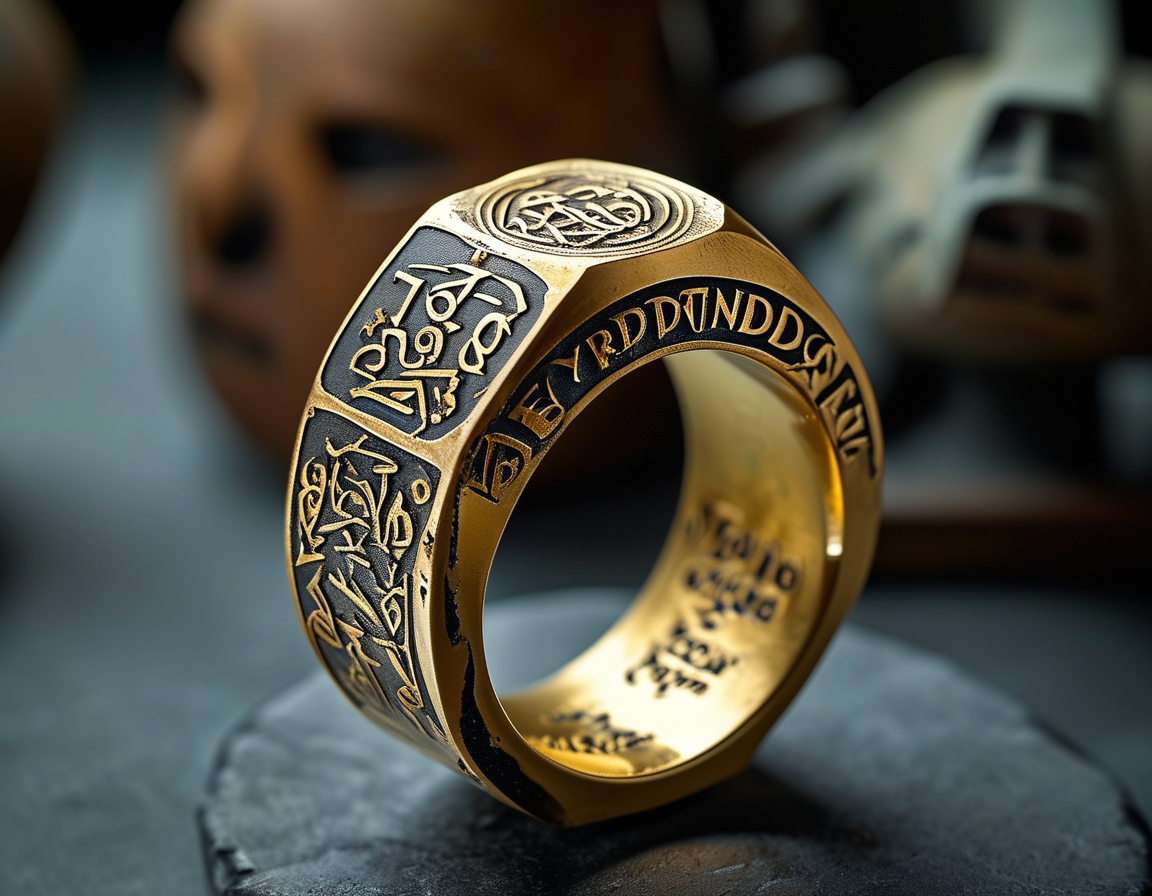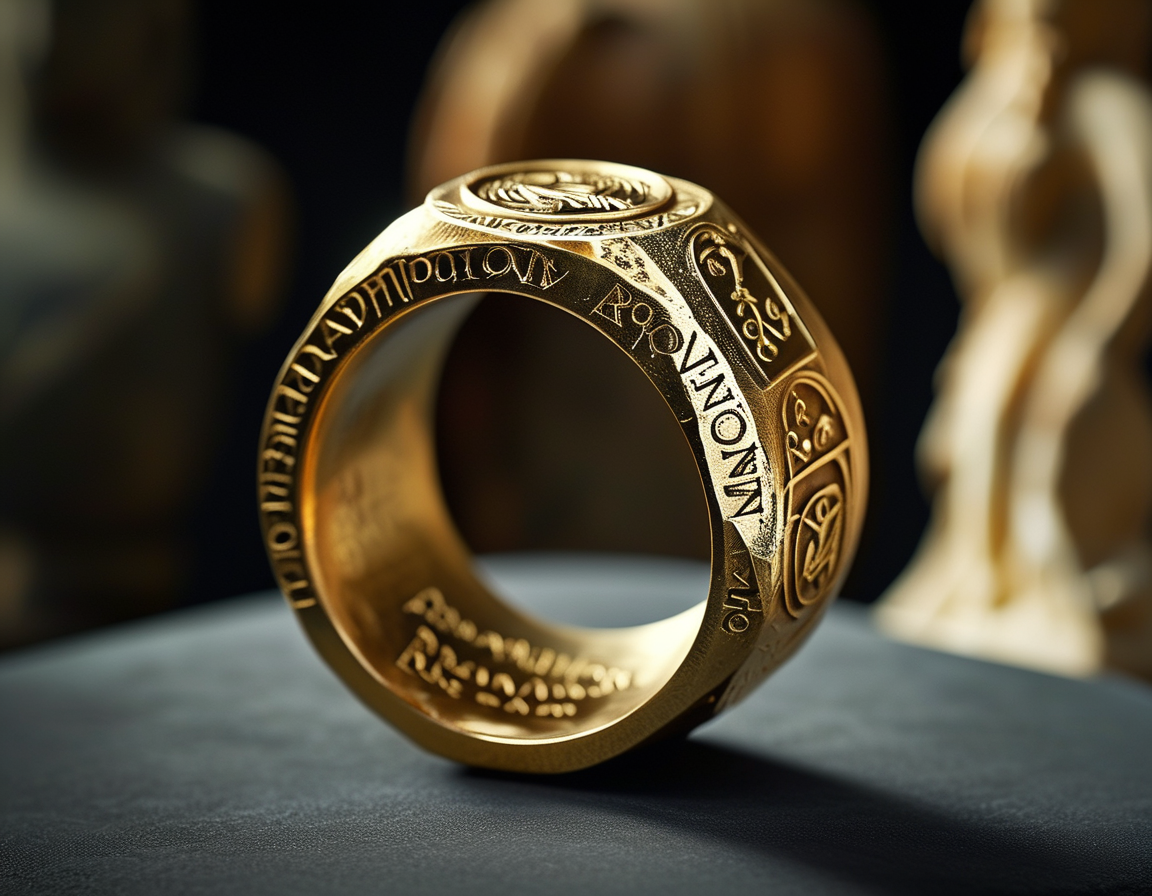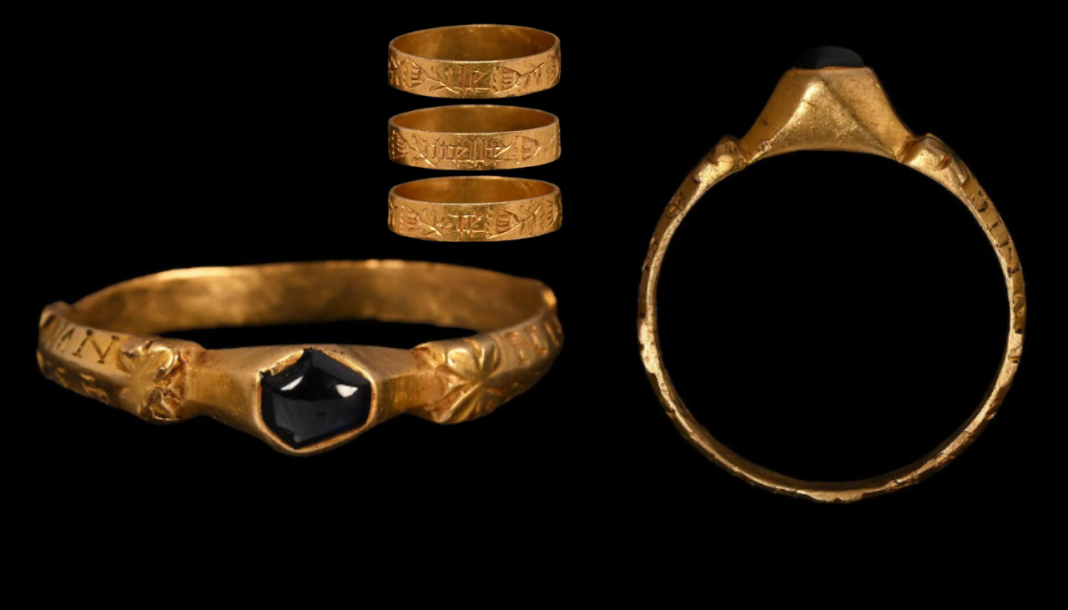Mystery surrounds a gold ring from the 12th or 13th century that contains a script that no one has been able to translate. It is quite fascinating, isn’t it?
Pulled from the ground by metal detectorist Chris Weir in Oxfordshire, it has sparked intrigue among historians and treasure hunters alike. The ring, intricately adorned with a sapphire and wrapped in the tantalizing thread of uncertainty, has now found its way back to Weir, declared treasure by curious authorities.

What does the inscription truly mean? The ring bears an enigmatic phrase: ‘NI ONAN NRIO ONIC/ NIAI AINO NAN’. Experts suggest that it might have been deemed “magical” back in its time.
Aaron Hammond, a notable figure in the auction world, offered a compelling thought. He explained, “Some engravers were illiterate but knew clients wanted an inscription.” Could it be that the meaning of this ring was never meant to be understood by just anybody? Perhaps it was meant for a different sort of audience.
There’s a recurring pattern in the engravings—‘NI’ and ‘AI’ come up again and again. Hammond posits that these repetitions could hint at chants or incantations, lending a layer of mystical allure to the historic jewelry.

The uncertainty surrounding the Drayton ring enhances its charm. How did it end up buried deep beneath the ground? Was it lost in a moment of urgency? Or was it carefully placed there as a part of a ritual?
Alongside this gem at the Timeline Auction, there lies another treasure: a gold “posy” ring from the 15th or 16th century. Mark Bowen discovered it in Lincolnshire just last year. This ring, inscribed with Anglo-Norman wording, shifts focus to a different kind of love—the love game. With roses and stalks engraved on its surface, its history presents romance entwined with mystery, another captivating topic in the world of antiquities.
But it doesn’t end there. The auction also features a Bronze Age long sword, estimated between £6,000 and £8,000. Found in the River Blackwater, this weapon holds stories that predate the Drayton ring by thousands of years. Imagine the battles it might have seen.

What compels people to dig through the earth in search of lost items? For many metal detector enthusiasts, the thrill lies not just in finding riches but in unearthing pieces of history—objects that once belonged to someone, somewhere, long ago.
Hammond contemplates that there are a few thousand hobbyists out there, tirelessly seeking the past. Each discovery, he suggests, presents a chance to understand Britain’s rich tapestry of history. It makes you wonder. How much do we really know of our history, and how much remains buried under our feet?
The Drayton ring stands as a symbol, both of mystery and craftsmanship. With an estimated value between £5,000 and £7,000, it’s not just a ring but a vessel of history—an object with secrets yearning to be unveiled.
While the Drayton ring sits at the center of this auction, other finds also evoke the marvel of antiquity. A Romano-British bronze statuette promises to draw attention, while Mercury’s four-inch figure waits quietly, hoping to tell its own tale.
The Timeline auction, closing on June 4, beckons enthusiasts to witness these treasures of relics from ages past. Each item gives insight into lives lived long before the modern era began.
So, what attracts you to these pieces of history? Is it the allure of riches, the connection to the past, or the stories that could potentially arise from each object?
Whatever it is, there’s a profound sense of connection in each discovery, a reminder that history isn’t just written in books but told through the very artifacts resting below our feet. The next time you walk across a field or stroll through a park, consider—what stories lie waiting beneath the surface?




